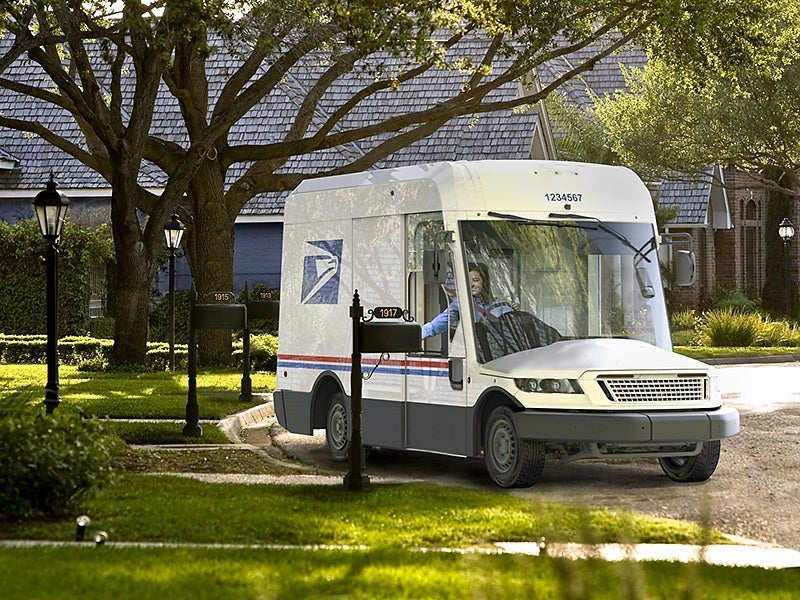Electric Postal Service Vehicles Deliver Holiday Cheer and Clean Air
EVs are now operating from 65 post offices across the U.S., followed by years of public pressure and Earthjustice litigation.

Just in time for the holiday season, America’s postal service is delivering a gift that truly keeps on giving: its first crop of zero emissions, all electric vehicles.
To date, the U.S. Postal Service has rolled out more than 2,600 electric vehicles for mail deliveries at 65 sites around the country, including in California, Colorado, Georgia, Missouri, and New York. This is part of a historic decision in 2022 to electrify a majority of USPS mail trucks after sustained Earthjustice litigation and a wave of advocacy that saw thousands of Americans writing to the Postal Service about their trucks.
Many letter carriers love the electric trucks, citing major upgrades like air conditioning, anti-lock brakes, and airbags. Best of all, the new vehicles mean cleaner air for the neighborhoods they operate in and a healthier climate overall.
“It was time for a change,” says Richard Burton, a letter carrier in Athens, Georgia, who has worked for the postal service for 20 years and was one of the first carriers to drive an electric mail truck. “They’re a major upgrade, especially with the air conditioning in hot Georgia summers.”
As Earthjustice works to transition the country to 100% clean energy, we’re targeting everything from the stoves, appliances, and heaters in our homes to the boilers, ovens, and dryers in our factories. Mail trucks in particular are primed for electrification given that they travel short distances each day, tend to idle as they traverse streets, and park at night in centralized locations for easy charging. But electrifying USPS’ fleet wasn’t always a no-brainer for the federal government.
In 2021, USPS announced plans to replace a large swath of its fleet of over 200,000 trucks with a new model that would have gotten worse fuel economy than a gas-powered Ford F-150. Earthjustice filed suit soon after, arguing that USPS violated the law by failing to do a basic environmental assessment of its plan.
The agency also faced overwhelming criticism from the public, which sent in thousands of comments pressing for an electrified mail fleet, including more than 125,000 from Earthjustice supporters. And for good reason — investing in a fully electric fleet of mail trucks would prevent the Postal Service from burning 135 million gallons of polluting fuel every year.
Eventually, USPS changed its mind, announcing plans to shift to predominantly electric mail truck purchases between 2023 and 2026, and a commitment to make all mail truck purchases electric after 2026. The Inflation Reduction Act in 2022 provided an additional boost by including a monumental $3 billion in federal money for zero-emissions USPS mail trucks.
The USPS fleet is roughly a third of the entire federal civilian fleet, so electrifying these vehicles is a pivotal win in bringing clean air benefits to every neighborhood in the country. They’re also a win for USPS employees, who appreciate the electric vehicles’ expanded cargo area, smoother ride, and quieter engines.
And kids love them.
“You can actually fit a whole class of students in the truck, and they have plenty of room to stand around,” says Burton, who has taken his mail truck to elementary schools for career day.
“They sit in the front or pile into the back, and they just have a blast.”
Earthjustice’s Clean Energy Program uses the power of the law and the strength of partnership to accelerate the transition to 100% clean energy.